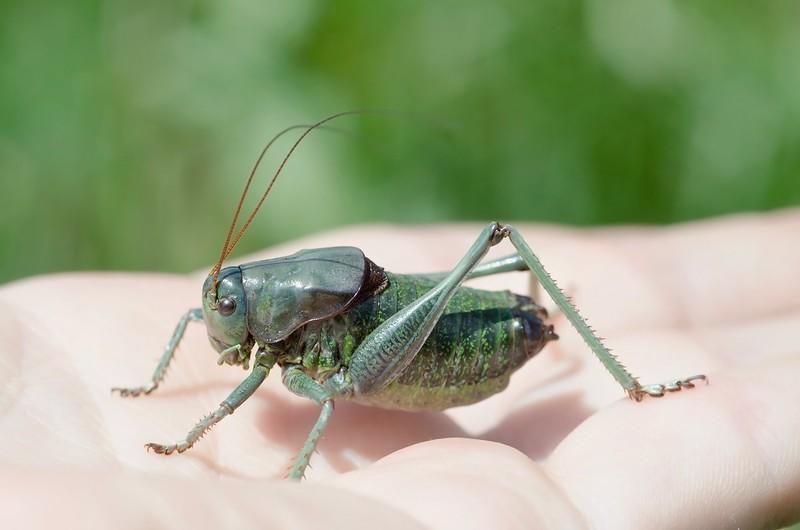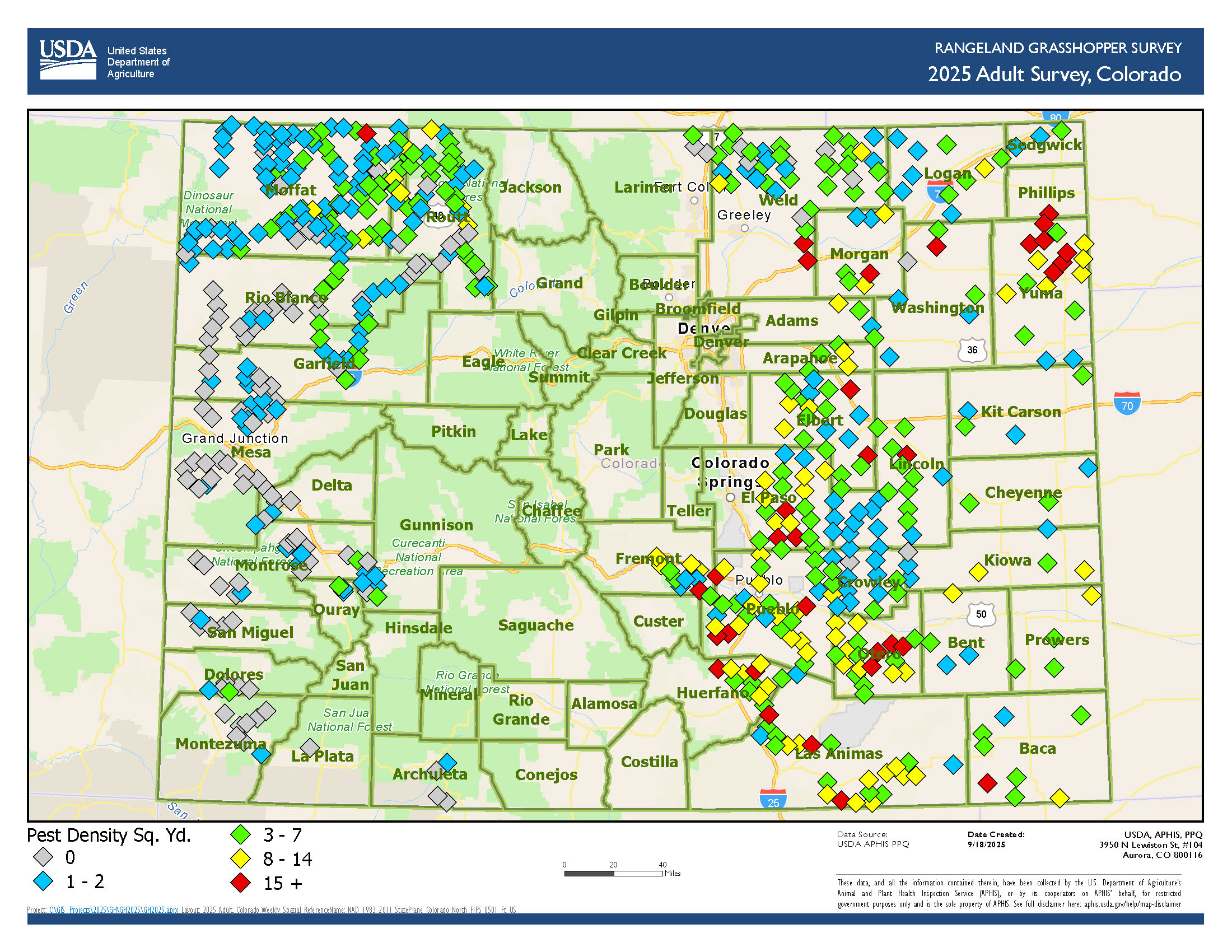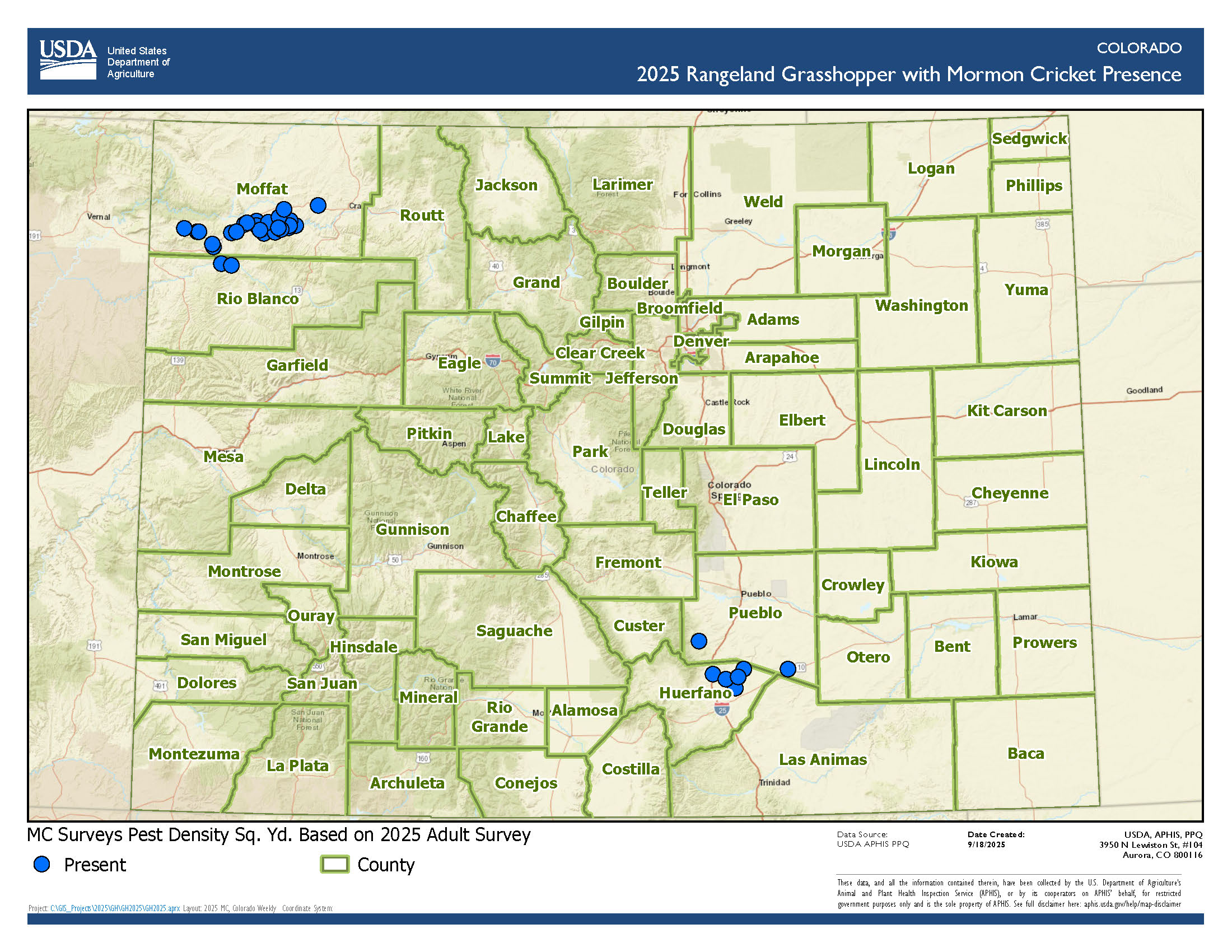Protecting rangeland from grasshoppers and Mormon crickets
Nearly 400 grasshopper species inhabit the Western United States, but only a small number of them are considered pests, with varying numbers and combinations of species found in each rangeland ecosystem. The Mormon cricket (Anabrus simplex) is the only katydid species known to reach outbreak-level populations in the United States.
Grasshopper populations fluctuate greatly from year to year, and may cause serious damage during periodic outbreaks. These insects eat plant stems and leaves, which interfere with plant growth and seed production. Their appetite can trigger devastating environmental issues, including soil erosion and degradation, nutrient cycle disruption, and water filtration interference.
At this time, State of Colorado and CDA do not have a program working on grasshopper and Mormon cricket issues.
When outbreaks of these pests threaten rangeland forage, you can request help from the U.S. Department of Agriculture (USDA) to suppress their populations. You can learn more about grasshoppers and Mormon crickets from the USDA.
For additional information about managing grasshoppers in crops, gardens and small acreages, contact your CSU Extension county office.

Rangeland Grasshopper and Mormon Cricket Suppression Program

Through the Rangeland Grasshopper and Mormon Cricket Suppression Program, USDA’s Animal and Plant Health Inspection Service (APHIS) surveys rangeland grasshopper and Mormon cricket populations in 17 Western States, including Colorado.
APHIS only treats grasshoppers or Mormon crickets upon written request of the landowner and after assessing several factors to determine if treatment will be effective.
Learn more about APHIS’ Rangeland Grasshopper and Mormon Cricket Suppression Program or contact your State Plant Health Director.
Below, you can view two maps from the Rangeland Grasshopper Survey conducted by the USDA.
You can view detailed PDFs by clicking on the map images.
Other resources
Grasshopper Control in Gardens and Small Acreages (CSU Extension)
Grasshoppers of Wyoming and the West (Univ. of Wyoming)
Frequently Asked Questions About Grasshoppers and Mormon Crickets in Western States (USDA)
Protecting U.S. Rangeland From Grasshoppers and Mormon Crickets (PDF, USDA)

